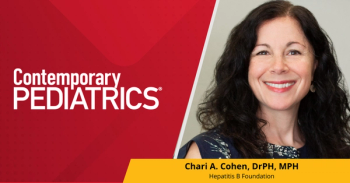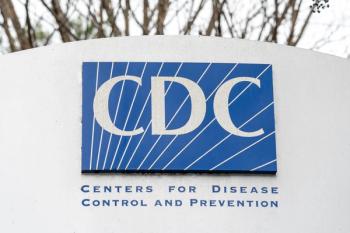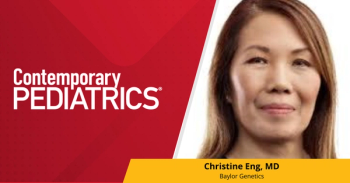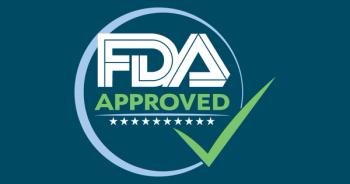
Top 5 pediatric health headlines you missed in September 2025
Take a quick look at everything you may have missed this month, including the top FDA approvals and latest clinical updates.
September 2025 brought new insights and policy shifts with direct implications for pediatric prevention, infectious disease management, and early risk assessment.
In this monthly recap, Contemporary Pediatrics reviews the most significant developments shaping pediatric practice and public health. Click each title below for full coverage.
1. AAP 2025 National Conference kicks off in Denver with focus on connection, innovation, and child health
The American Academy of Pediatrics (AAP) opened its 2025 National Conference & Exhibition in Denver, marking the first time the event has been hosted in the city. Running September 26–30, the meeting brings together more than 10,000 pediatric professionals from 71 countries for over 260 sessions on topics ranging from artificial intelligence and social media’s impact on child mental health to special education, chronic disease management, and equity in care. AAP President Susan Kressly, MD, FAAP, will address systemic challenges and the Academy’s role in advancing children’s health, while keynote speaker Will Flanary, MD (“Dr. Glaucomflecken”), will bring humor and perspective on clinician well-being. The event also includes a large exhibit hall showcasing innovations in pediatric practice.
2. CDC reports highest number of pediatric influenza-associated deaths since 2009-10
The 2024–2025 influenza season resulted in 280 pediatric influenza-associated deaths, the second-highest total since child deaths became nationally notifiable in 2004, according to the CDC’s Morbidity and Mortality Weekly Report. Deaths represented a national rate of 3.8 per 1 million children, with the highest mortality observed in infants younger than 6 months (11.1 per 1 million). Most cases involved influenza A viruses (86%), and 89% of vaccine-eligible children who died had not been fully vaccinated. Over half of the cases involved underlying conditions, primarily neurologic, though many deaths occurred in previously healthy children. Median time from symptom onset to death was 4 days, and nearly half of the patients were never hospitalized. Investigators emphasized annual influenza vaccination for all children aged 6 months and older as the most effective prevention strategy and highlighted the need for pediatric vigilance given the potential for rapid deterioration in otherwise healthy patients.
3. AAP announces updated clinical report to manage food allergy in schools
The AAP has released an updated clinical report on food allergy management in schools, published in Pediatrics. As many as 1 in 10 children are affected by food allergies, with peanuts, tree nuts, milk, eggs, soy, wheat, fish, shellfish, and sesame accounting for the most severe reactions. The report emphasizes accurate diagnosis supported by clinical history, testing, and, when needed, oral food challenges. Pediatricians are advised to provide standardized allergy and anaphylaxis emergency plans to schools, prescribe epinephrine auto-injectors, and support stock epinephrine programs, which have been used in up to 31% of reactions among children without prior diagnoses. The guidance also highlights risk-reduction strategies, including no food-sharing policies, proper handwashing, label reading, and safe classroom practices. In addition to medical management, the report underscores the psychosocial impact of food allergies, recommending anti-bullying initiatives and school-wide education to create safe, supportive environments for children.
4. ACIP completes September meeting with votes on COVID-19 vaccines
At its September 2025 meetings, the CDC’s Advisory Committee on Immunization Practices (ACIP) voted on several vaccine policy changes with implications for pediatric and adult care. On September 19, the committee endorsed stronger informed consent for COVID-19 vaccination and updated schedules to recommend shared decision-making: vaccination for adults ≥65 years and individualized consideration for ages 6 months to 64, with greatest benefit in high-risk groups. A proposal to require prescriptions for COVID-19 vaccines failed (6–6 tie). On September 18, ACIP voted 8–3 to advise separate MMR and varicella vaccines (MMR+V) for children <4 years, citing febrile seizure risk, while leaving MMRV as an option for older children. A planned vote on delaying hepatitis B vaccination to 30 days after birth was tabled. The committee also reaffirmed annual influenza vaccination for all persons ≥6 months and supported the addition of clesrovimab, an RSV monoclonal antibody, to the Vaccines for Children program. Final implementation awaits approval from the HHS Secretary.
5. Guideline introduces recommendations for postoperative nutrition in neonates with enterostomy
The Postoperative Nutrition Support in Neonates with Enterostomy (PONS-NE) guideline has been developed to address nutritional complications following enterostomy, according to a report in Pediatric Investigation. Drawing from 64 studies, the multidisciplinary guideline provides 22 recommendations across enteral and parenteral nutrition, fluid management, and follow-up care. Key strategies include early initiation of enteral feeds, prioritization of breast or donor milk, use of specialized formulas when needed, and consideration of mucous fistula refeeding. Parenteral nutrition should incorporate fish oil–based emulsions and micronutrient supplementation, with close monitoring of fluid balance to reduce postoperative complications. Stoma closure is recommended at 12 weeks postoperatively, with ongoing multidisciplinary follow-up to support growth and neurodevelopment. Investigators emphasized that adoption of PONS-NE could standardize care and improve survival outcomes in this high-risk neonatal population.
Newsletter
Access practical, evidence-based guidance to support better care for our youngest patients. Join our email list for the latest clinical updates.









